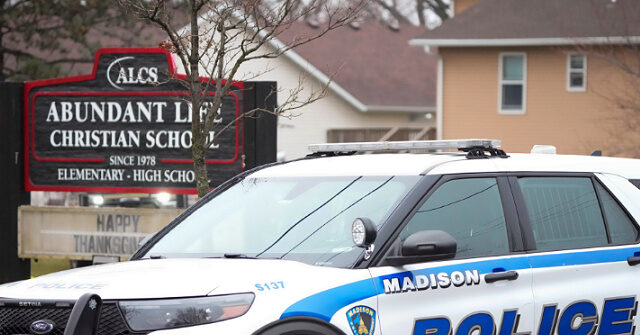A tragic incident occurred at Madison’s Abundant Life Christian School when a 15-year-old girl opened fire on the premises. Initial reports confirmed that the girl was in possession of two handguns, both of which had been purchased legally. According to Madison Chief of Police Shon Barnes, the authorities, along with the Bureau of Alcohol, Tobacco, Firearms and Explosives (ATF), have traced the purchase of the firearms back to a specific individual. However, law enforcement has chosen not to disclose the identity of this person at present, in order to maintain the integrity of the ongoing investigation into the incident. This decision underscores the sensitive nature of the case and the complexities involved in tracing the origins of the firearms used in such tragic events.
Chief Barnes emphasized that the focus of the investigation is not only on the firearms but also on understanding the circumstances surrounding the girl’s decision to walk into the school armed. Investigators aim to create a detailed timeline leading up to the shooting, examining her state of mind and any potential influences or accomplices in the events leading to this tragedy. By piecing together this timeline, authorities hope to gain insights into the motivations behind her actions and potentially prevent similar incidents in the future. This endeavor reflects a broader effort to understand the root causes of school violence, which has become a pressing concern in society.
Complicating the investigation is a potential connection to another plot involving a coordinated attack. Reports indicate that at the same time the Madison shooting was occurring, a 20-year-old man named Alexander Paffendorf from Carlsbad, California, was allegedly involved in planning a mass shooting in conjunction with the teen shooter. This connection raises further questions for investigators about the extent of collaboration, the influences between the two individuals, and how such dangerous ideologies can manifest among youth. This broader investigation into potential links between the two suspects is critical for law enforcement as they strive to prevent any further acts of violence.
In light of these circumstances, questions regarding gun laws and the accessibility of firearms to minors have come to the forefront of public discourse. This incident has spurred conversations about the effectiveness of current regulations governing the sale and purchase of firearms. Many advocates for gun control argue that measures need to be strengthened to ensure that firearms do not end up in the hands of those who may pose a risk to themselves or others. As the investigation unfolds, these discussions are likely to intensify, reflecting ongoing societal concerns about gun violence and youth safety in educational environments.
AWR Hawkins, a Second Amendment columnist and political analyst for Breitbart News, frequently contributes commentary on matters related to gun ownership and legislation. Providing insights into the legal landscape surrounding firearms, Hawkins highlights the importance of individual rights while also acknowledging the responsibilities that come with gun ownership. His experience and expertise offer a broader perspective on the implications of such violent events on public policy, the Second Amendment, and the conversations that emerge in the wake of tragedies like the one at Madison’s Abundant Life Christian School.
Overall, this tragic incident serves as a grim reminder of the complexities surrounding youth violence, gun ownership, and the societal measures needed to address these issues. As investigators piece together the timeline and uncover potential connections, it is essential for communities to engage in meaningful discussions about prevention, policy reforms, and the factors that contribute to such unfortunate acts. The outcome of this investigation could play a significant role in shaping future approaches to gun laws and school safety, urging society to reflect deeply on the important steps that need to be taken in order to protect the lives of young people in educational institutions.

